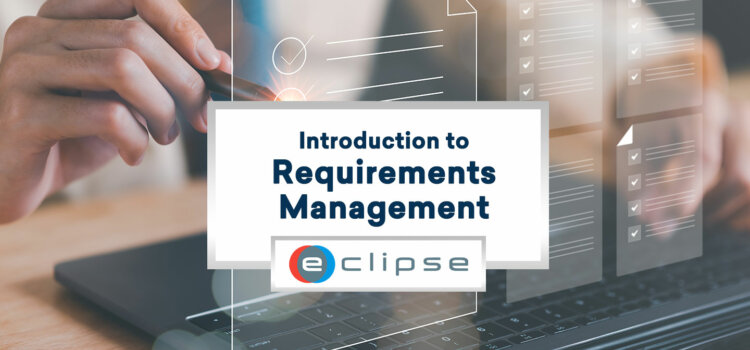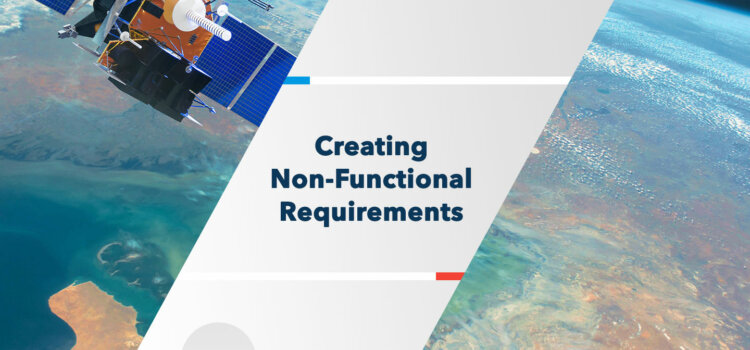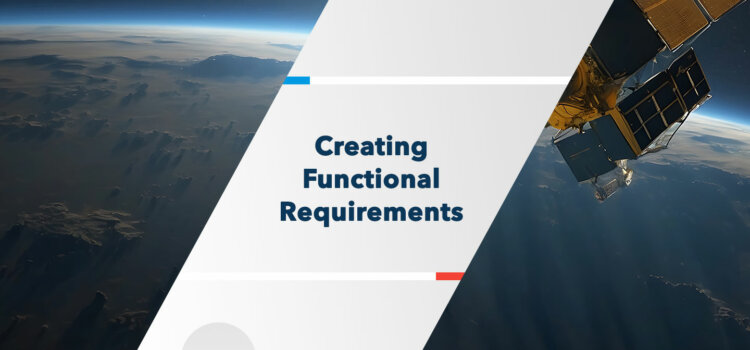
Requirements Management: Structuring your project for success
05 Feb, 2025
Managing project requirements is essential for successful product development.
Whether designing software, engineering hardware, or planning large-scale systems, requirements define what must be built, how it should function, and what constraints must be considered. Poor requirements management can lead to inefficiencies, delays, and project failures.
This article explores requirements management fundamentals, structured processes, common challenges, best practices, and how it is essential for project success.
What is requirements management?
Requirements management (RM) is primarily about creating, tracking, validating, and controlling requirements throughout the project lifecycle, ensuring they remain relevant, traceable, and aligned with project goals.
It also includes handling changes, maintaining traceability, assessing the impact of modifications, and ensuring that requirements continue to meet standards.
RM also bridges requirements development and other engineering disciplines, such as project management, risk management, and test management. Without effective RM, requirements can quickly become outdated, leading to misalignment, project risks, and inefficiencies.
Purpose of requirements management
Effective requirements management (RM) provides several key benefits for organizations. It
- Improves stakeholder communication
- Ensures project goals align with customer expectations
- Reduces misunderstandings
Together, these lead to shorter development cycles, lower costs, and faster time to market.
RM also enhances product quality by maintaining traceability and facilitating rigorous testing. Additionally, it minimizes risks by identifying issues early, and find solutions for them. Another major advantage is reusability; well-documented requirements can be leveraged across multiple projects, increasing efficiency. Finally, RM provides legal clarity for customers and suppliers by maintaining transparent documentation of agreements and decisions. As you can see, requirements management is essential in product development.
Why is requirement management important?
Requirement management ensures project success by keeping requirements clear, consistent, and aligned with stakeholder expectations. It helps in:
- Preventing scope creep – Avoids uncontrolled changes that can derail the project.
- Reducing misunderstandings – Ensures all stakeholders have a shared understanding of project goals.
- Improving communication – Bridges gaps between business, development, and other teams.
- Ensuring traceability – Tracks changes to requirements, maintaining compliance and quality.
- Minimizing risks – Identifies potential issues early, reducing costly errors.
- Controlling costs – Helps manage budgets by avoiding unnecessary revisions.
By systematically managing requirements, teams can deliver products that meet business objectives efficiently. Ultimately, it fosters collaboration and increases the likelihood of project success.
Who creates requirements for a new project?
Requirements for a new project are typically created by stakeholders, which may include:
- Business analysts: Leading the elicitation and documentation of requirements.
- Project managers: Ensuring alignment with project scope and objectives.
- Product owners: Representing customer needs in Agile environments.
- End users and customers: Providing insights into functional and non-functional needs.
- Subject matter experts: Offering technical and domain-specific expertise.
- Regulatory bodies and compliance teams: Defining industry standards and legal requirements.
How is requirements management essential for any project?
Generally, without proper requirements management, projects face higher risks of failure, cost overruns, and stakeholder dissatisfaction.
Requirements management is crucial for project success because it helps to:
- Ensure alignment with business goals: Helps in defining clear objectives and success criteria.
- Prevent scope creep: Tracks requirement changes to avoid uncontrolled expansions.
- Enhance communication: Provides a common understanding between teams and stakeholders.
- Improve quality and compliance: Ensures requirements meet regulatory and business standards.
- Support risk management: Identifies and mitigates potential risks early in the project.
- Facilitate traceability: Ensures every requirement is linked to business needs and project deliverables.
Adaptive vs Predictive Requirements setting
There are two main approaches to requirements management.
- Adaptive (Agile): In an adaptive life cycle, requirements are gathered and analyzed throughout the project. This includes setting up the initial task list (backlog), refining it over time, and reviewing details for each phase. Requirements change as the project progresses, allowing for flexibility. Use an adaptive approach when flexibility is important (e.g., software development).
- Predictive (Traditional): Requirements are set early on and followed closely. Use a predictive approach when a clear, fixed plan is needed (e.g., construction projects).
The steps within requirement management
A requirements management workflow typically has the following steps:
1. Needs assessment
Identifying and defining a business problem or opportunity to establish a high-level understanding of stakeholder needs.
- Develop a strategic plan to fit in the portfolio: Aligning all portfolio components with organizational strategy.
- Define portfolio roadmap: Establishing dependencies and prioritization across initiatives.
- Create benefits register: Listing and prioritizing the planned benefits.
- Engage stakeholders: Identify key stakeholders and speak to them about the requirements.
2. Develop a requirements management plan
The requirements management plan outlines the scope of requirements activities and expected deliverables. Key components include:
- How requirements are created, tracked, validated, and reported.
- Roles and responsibilities of team members involved in requirements activities.
- The decision-making and approval process.
- How requirements are prioritized, approved, and maintained.
- How acceptance criteria for requirements and solutions are determined.
- What product metrics are used and why?
- The structure for tracking requirements and the attributes captured in the traceability matrix.
- How requirements are documented and communicated to stakeholders.
3. Requirements elicitation
Requirements elicitation is critical for gathering the necessary information to define project requirements. Done correctly, it ensures that business needs are understood, stakeholders are engaged, and requirements are clear and actionable. Below are ten key practices to improve requirements elicitation:
- Plan and prepare thoroughly: The requirements management plan will already give you a broad idea. You will still need to define the elicitation approach, identify key stakeholders, and prepare agendas and materials in advance.
- Engage stakeholders actively: Involve a diverse group of stakeholders early and consistently to ensure different perspectives are considered and expectations are managed.
- Understand the business need: Clearly define the business problem or opportunity before eliciting requirements. A well-conducted needs assessment ensures relevant and valuable information is gathered.
- Leverage domain knowledge: Ensure the person responsible for elicitation understands industry-specific terms, processes, and best practices or has access to subject matter experts.
- Use a mix of elicitation techniques: Combine methods like interviews, focus groups, brainstorming, document analysis, and observation to capture a well-rounded set of requirements.
- Refine continuously: Recognize that requirements evolve. Regularly review, refine, and decompose requirements as new information becomes available.
- Consider project lifecycle: Tailor elicitation methods to the project’s lifecycle. Predictive models require early, detailed elicitation, while adaptive approaches integrate ongoing refinement.
- Ensure traceability and accountability: Establish a structure to track requirements from elicitation through implementation. Define clear ownership for each requirement to prevent gaps and ambiguities. Record elicitation results using various formats (meeting minutes, audio recordings, diagrams, etc.) and review them with stakeholders for accuracy and completeness.
- Define and categorize requirements clearly: Classify business, stakeholder, solution (functional and non-functional), transition, and quality to provide structure and clarity.
The Requirements Backlog
After completing this step, ensure you have a prioritized list of requirements. Regularly review and refine the backlog to ensure high-priority tasks are addressed first.
Hold backlog grooming sessions to refine and clarify upcoming requirements if you work adaptively.
Main ways to categorize requirements
Functional vs. non-functional requirements
Functional requirements
Functional requirements define what a system must do in terms of its operations, features, and behaviors. They specify actions, processes, and expected outputs that the system must support to fulfill its intended purpose.
Examples:
- “The system must process user login requests within two seconds.”
- “The application must support both English and Spanish language options.”
Non-functional requirements
Non-functional requirements define how a system should perform rather than what it should do. They cover performance, security, usability, and compliance constraints, ensuring that the system operates efficiently and meets quality standards.
Examples:
- “The database must handle up to 10,000 concurrent users.”
- “The system must comply with ISO 27001 security standards.”
Key distinction: Functional requirements specify what the system must do, while non-functional requirements define constraints and quality attributes that affect how the system performs. Together, they ensure that the system meets both business needs and operational expectations.
High-level vs. low-level requirements
High-level requirements (HLRs)
High-level requirements define the broader goals, objectives, and expected outcomes of a system or product. They provide a general view of what must be achieved but do not specify technical details. HLRs serve as a foundation for more detailed requirements and are typically defined by stakeholders, business analysts, or customers.
Examples:
- “The system shall allow users to make online payments.”
- “The application must support user authentication and access control.”
Low-level requirements (LLRs)
Low-level requirements break down high-level requirements into specific, detailed system specifications. They describe how the system should function, including technical details, design constraints, and implementation requirements. LLRs guide developers and engineers in system construction by providing clarity on algorithms, data formats, user interactions, and hardware/software integration.
Examples:
- “The login system must encrypt passwords using SHA-256.”
- “The payment gateway must validate credit card numbers using the Luhn algorithm.”
Key distinction: HLRs define the “what” (broad system objectives), while LLRs define the “how (detailed implementation instructions). This structured approach ensures clear requirement traceability from business needs to technical execution.
Other requirements categories
There are many ways to categorize requirements. Below is a list of options to categorize your requirements.
Regulatory and Compliance Requirements: Imposed by legal or industry standards.
- Example: GDPR Compliance, Data privacy and security regulations.
- Example: FAA Regulations, Requirements for aviation software and hardware.
User Requirements: Gathered from stakeholder interviews, user stories, or surveys.
- Example: “Users should be able to reset passwords via email.”
- Example: “Customers should receive order status updates in real-time.”
Technical Requirements: Specifications for system architecture, database design, or hardware integration.
- Example: “The application must be compatible with Windows, macOS, and Linux.”
- Example: “The system must support AES-256 encryption for data security.”
Business Requirements: High-level objectives that define what the business needs from the system.
- Example: “Increase online sales by 20% within one year.”
System Requirements: Describe the overall system capabilities and constraints.
- Example: “The system must support at least 500 concurrent transactions per second.”
Security Requirements: Define how the system protects data, users, and resources.
- Example: “Users must authenticate with two-factor authentication (2FA).”
Performance Requirements: Specify response times, throughput, and system efficiency.
- Example: “The webpage must load within three seconds under normal traffic conditions.”
Usability Requirements: Define how user-friendly and accessible the system should be.
- Example: “The system must follow WCAG 2.1 accessibility guidelines.”
Scalability Requirements: Ensure the system can handle growth in users, data, or workload.
- Example: “The infrastructure must support a 50% increase in traffic during peak hours.”
Legal and Contractual Requirements: Terms imposed by laws, contracts, or policies.
- Example: “The software must comply with HIPAA regulations for patient data privacy.”
Interface Requirements: Define how the system interacts with other software or hardware.
- Example: “The application must integrate with third-party payment gateways like PayPal and Stripe.”
Environmental Requirements: Consider physical or external factors affecting the system.
- Example: “The hardware must operate in temperatures ranging from -10°C to 50°C.”
Availability Requirements: Define system uptime and fault tolerance.
- Example: “The system must maintain 99.9% uptime with automated failover capabilities.”
4. Requirements analysis
Requirements analysis is the process of defining, refining, and structuring requirements to ensure a project delivers. Here we break down the earlier found requirements into smaller, manageable pieces. It is important to repeatedly review and refine requirements throughout the project, also called iteration. Continuously revisit and update requirements as new information emerges rather than assuming all needs are known.
To analyze properly, the following is necessary:
- Skilled resources: The team must be able to analyze and refine requirements effectively. Ensure project analysts, developers, and stakeholders understand the domain and tools used in requirements analysis.
- Communication: Clear and continuous discussions between the team and stakeholders help refine requirements and prevent misunderstandings.
Hold regular meetings, document discussions, and clarify any vague requirements. - Collaboration: Working together with stakeholders ensures that requirements align with business needs. Involve stakeholders in requirement discussions and decisions to get early feedback and avoid costly changes later.
Techniques to use within the requirements analysis are:
Requirements modeling:
Requirements modeling is essential for visualizing, analyzing, and validating project requirements. Different types of models serve distinct purposes:
- Scope models define project boundaries.
- Function models describe system capabilities.
- Process models illustrate workflows and interactions..
- Rule models capture business rules and decision logic.
- Data models structure and define data relationships.
- Interface models describe user and system interactions.
There are many models you can use to visualize the requirements better. By learning about the differences between the models, you can choose the right model and present it to your team. This will improve communication, prevent misunderstandings, and ensure project success.
Methods to use for analyzing requirements
MoSCoW method: A technique for ranking requirements by importance:
- Must-have: Essential to the project.
- Should-have: Important but not critical.
- Could-have: Nice to have, but not necessary.
- Won’t-have: Not included in the current scope.
Categorize each requirement using MoSCoW to help focus on the most critical needs.
Another way to rank requirements is on prioritization; standard types are:
- Value
- Risk level
- Complexity
- Cost
- Regulatory constraints
Voting:
You can also choose a voting system where stakeholders vote on the importance of each requirement. Allow key decision-makers to assign priority scores to requirements based on business value.
Setting time limits for receiving feedback
Establishing a fixed timeframe for gathering and refining requirements is important to prevent delays. Clear deadlines for feedback and discussions help avoid excessive analysis, ensure timely decision-making, and keep the project moving forward toward implementation.
Verify and validate the requirements
- Verification: Ensuring requirements are well-written, structured, and error-free. Check for clarity, consistency, and feasibility before finalizing requirements.
- Validation: Ensure that requirements reflect what stakeholders actually need. Review requirements with stakeholders through walkthroughs or prototype testing to confirm that they meet business objectives.
Traceability matrix
To write all the information down you will need a proper system. An option for this is a requirements traceability matrix. Traceability tracks requirements from origin to final implementation. Documentation records all requirement details for future reference. A way to trace your requirements is with a traceability matrix. This structured list links requirements to various project elements such as creators, stakeholders, business objectives, design components, test cases, and final deliverables.
The purpose of a traceability matrix is to:
- Track requirement changes and assess their impact on the project.
- Ensure that all requirements are implemented correctly.
- Maintain alignment between business needs, system design, and testing.
- Support compliance with regulations by providing a clear audit trail.
Key components of a traceability matrix include:
- Requirement ID: A unique identifier for each requirement.
- Requirement description: A clear summary of what the requirement entails.
- Source: The origin of the requirement (e.g., stakeholder, regulatory document).
- Priority: The importance level of the requirement.
- Status: Whether the requirement is pending, in progress, or completed.
- Linked artifacts: Design documents, test cases, or implementation details associated with the requirement.
Types of traceability matrices:
- Forward traceability: Maps requirements to their corresponding design, development, and test cases to ensure they are implemented correctly.
- Backward traceability: Ensures every implemented feature or test case maps back to a requirement, preventing unnecessary work.
- Bidirectional traceability: Combines both forward and backward traceability to provide full coverage and track requirement changes effectively.
Best practices for maintaining a traceability matrix:
- Regularly update the matrix to reflect requirement changes.
- Use a requirements management tool to automate tracking.
- Ensure all stakeholders have access to the matrix for transparency.
- Integrate traceability with testing to confirm that all requirements are met.
A well-maintained traceability matrix helps project teams stay organized, reduce risks, ensure compliance, and deliver a solution that meets business objectives.
5. Requirements change controlling
Requirements monitoring is the process of continuously tracking and managing requirements throughout a project’s lifecycle. It ensures that all requirements are implemented correctly, changes are managed efficiently, and traceability is maintained to align with business goals.
Why requirements monitoring is important
Managing requirements effectively is crucial because projects often evolve due to stakeholder needs, technical constraints, or regulatory changes. Without a structured approach, uncontrolled modifications can lead to scope creep, budget overruns, and project delays. Change requests play a key role in this process, ensuring that adjustments are evaluated, approved, and documented properly.
A well-structured monitoring process allows teams to:
- Maintain alignment with business objectives by ensuring all changes serve project goals.
- Ensure traceability by tracking requirements from origin to implementation.
- Control scope and budget by evaluating the impact of requirement changes.
- Reduce risks by identifying and mitigating issues early in the process.
Steps to handle change requests
- Use your traceability matrix: Map the new requirements to their sources, stakeholders, and deliverables.
- Manage requirements attributes: Create metadata such as priority, complexity, and status for the new requirements to understand which are most critical.
- Conduct impact analysis: Assess how a change will affect scope, budget, timeline, and dependencies before approving modifications.
- Monitor requirements status: Track progress, approvals, and modifications to ensure you can meet your project milestones.
- Use a change control board (CCB): A formal group that reviews and approves or rejects change requests to ensure consistency and prevent unnecessary alterations.
Unique techniques for requirements monitoring
Traceability matrix: A structured tool that links requirements to their sources, test cases, and deliverables.
- How it works: Captures relationships between requirements and tracks dependencies.
- When to use: Essential in projects where compliance, audits, or complex dependencies exist.
Impact analysis: A process that evaluates the effect of requirement changes on the project scope, budget, and timeline.
- How it works: Compares proposed changes against current project constraints to assess feasibility.
- When to use: Whenever a requirement modification is proposed to avoid unintended disruptions.
Change control boards (CCB): A formal group responsible for reviewing and approving changes to project requirements.
- How it works: Reviews change requests, evaluates risks and ensures all modifications align with business needs.
- When to use: In large-scale or regulated projects, governance and controlled decision-making are essential.
Requirements change control is critical for ensuring that all project requirements are effectively tracked, managed, and controlled. By implementing structured processes such as traceability matrices, impact analysis, and change control boards, teams can prevent uncontrolled changes, maintain alignment with business goals, and ensure project success.
6. Solution evaluation
Solution evaluation is the process of assessing whether a solution meets stakeholder expectations and business needs. It ensures that the solution delivers value to the customer and identifies any gaps or changes required for refinement. Evaluation is conducted before or after implementation to validate that the solution aligns with the intended objectives.
Why is solution evaluation important?
Evaluating a solution is critical to ensuring its effectiveness and usability. Without proper evaluation, the solution may fail to meet business goals, leading to inefficiencies, rework, and increased costs.
Key benefits of solution evaluation include:
- Ensuring business alignment: Confirms that the solution addresses the original requirements and objectives.
- Identifying gaps and improvements: Helps refine requirements and optimize performance.
- Supporting verification and validation: Ensures that the solution is both correctly implemented (verification) and meets stakeholder needs (validation).
- Facilitating acceptance: Provides a structured approach to stakeholder approval before deployment.
Steps in solution evaluation
- Plan for Evaluation: Define evaluation methods early in the project, considering business objectives, regulatory requirements, and stakeholder expectations.
- Validate Solution Against Requirements: Assess whether the solution meets predefined acceptance criteria, considering both functional and non-functional aspects.
- Document And Communicate Results: Record findings using reports, presentations, or formal documentation to support decision-making and further refinements.
- Refine and Improve: If gaps are found, update requirements or modify the solution accordingly before final implementation.
Unique techniques for solution evaluation
Soliciting Inputs
Gathering feedback from stakeholders, end users, or experts to assess whether the solution meets expectations.
- How it works: Uses techniques such as focus groups, surveys, brainstorming, and structured reviews.
- When to use: Ideal for assessing usability, business value, and overall satisfaction with the solution.
Testing
A structured process to verify if the solution meets predefined requirements and functions as intended.
- How it works: It can include user acceptance testing (UAT), system testing, or exploratory testing.
- When to use: Best applied before deployment to detect defects and confirm performance.
Demonstration
A practical method where the solution is operated in a real or simulated environment to validate functionality.
- How it works: The team showcases how the solution works, often involving live demonstrations or prototypes.
- When to use: Useful for validating user workflows and ensuring seamless integration with existing systems.
7. Project or phase closure
Project or phase closure involves finalizing all project activities, ensuring all requirements are met, and transitioning the product, service, or result to operations. It also involves documenting lessons learned, validating outcomes, and officially closing the project or a specific phase. Stakeholders provide formal or informal signoff if a solution evaluation confirms that objectives have been met.
Why is project or phase closure necessary?
Key reasons for project or phase closure:
- Ensuring project success: Closure confirms that all deliverables meet business and stakeholder expectations.
- Managing the transition to operations: Ensures the solution is handed correctly off and integrated into existing processes.
- Documenting lessons learned: Captures insights that can improve future projects.
- Reusing assets and knowledge: Helps organizations leverage past work to improve efficiency and reduce costs.
Steps in project or phase closure
- Develop a documented transition plan: Add all project files, records, and relevant documents for reference.
- Obtain final customer acceptance: Secure internal or external approval before considering the project complete.
- Define metrics for measuring benefits: Establish measurable indicators to track the long-term value and success of the project.
- Document results: Record final project outcomes, ensuring that future teams can reference completed work.
- Support knowledge transfer: Establish structured processes for sharing information across teams.
- Transition to operations: Ensure that operational teams understand how to maintain and sustain the solution.
Unique techniques for project or phase closure
What are the characteristics of a well-defined requirement?
Good requirements are the foundation of any successful project. If they’re unclear, incomplete, or contradictory, the project is set up for delays, cost overruns, and failure. Well-defined requirements help ensure everyone—developers, testers, stakeholders—is on the same page. While there are many factors to consider, checking your requirements against key criteria can save time, reduce risks, and lead to a smoother development process.
Characteristics of a Well-Defined Requirement
Consistent: It should not contradict or duplicate other requirements.
- Good: “A user must be logged in to access the dashboard.”
- Bad: “Guests can access the dashboard, but only logged-in users can use the dashboard features.” (Conflicting statements)
- If done wrong: Contradictions can cause major issues in development and testing, leading to wasted time and rework.
Unambiguous: The requirement must have only one interpretation, understood the same way by all stakeholders.
- Good: “The system shall display an error message when a user enters an invalid email address.”
- Bad: “The system should handle incorrect email entries appropriately.” (What does “appropriately” mean?)
- If done wrong: Developers may implement different behaviors, leading to confusion and inconsistent user experience.
Correct: The requirement accurately represents the business or stakeholder need.
- Good: “The application must support payment via credit card and PayPal.”
- Bad: “The application must support PayPal only.” (If stakeholders requested multiple payment options, this is incorrect.)
- If done wrong: The final product may not meet business needs, requiring costly fixes after deployment.
Measurable (Verifiable & Testable): The requirement must be provable through analysis, testing, inspection, or demonstration.
- Good: “The system must process 100 transactions per second under normal load conditions.”
- Bad: “The system must be fast.” (What does “fast” mean? How can it be tested?)
- If done wrong: There is no way to verify if the requirement is met, making testing ineffective.
Feasible: Must be realistic and implementable within constraints such as budget, technology, and time.
- Good: “The system shall support up to 10,000 concurrent users based on current infrastructure limits.”
- Bad: “The system should support unlimited users at all times.” (Not technically or financially feasible.)
- If done wrong: The requirement may be impossible to implement, causing delays and unnecessary costs.
Traceable (top-down & bidirectional): Clearly linked to its source (business goal, regulation, or stakeholder request) and connected to test cases and validation activities.
- Good: “Based on GDPR compliance (Article 17), users must be able to delete their accounts permanently.”
- Bad: “Users should have some control over their data.” (No clear origin or testability.)
- If done wrong: It becomes difficult to justify or validate the requirement, leading to compliance risks.
Uniquely identifiable: Each requirement should have a distinct identifier for tracking and referencing.
- Good: “REQ-001: The system shall send a confirmation email after user registration.”
- Bad: “The system should send an email upon registration.” (No unique identifier for tracking.)
- If done wrong: Requirements may get lost, duplicated, or misunderstood in large projects.
Complete: Includes all necessary details to enable development, testing, and implementation.
- Good: “A user can reset their password by providing their registered email. A reset link will be sent, valid for 24 hours.”
- Bad: “Users should be able to reset their password.” (Lacks details on how this works.)
- If done wrong: Developers and testers may make assumptions, leading to incomplete or incorrect functionality.
Atomic: The requirement must describe a single feature or capability, not a combination of multiple needs.
- Good: “The user can upload a profile picture.”
- Bad: “The user can upload a profile picture and edit their profile details in the same menu.” (Two separate requirements mixed together.)
- If done wrong: It complicates implementation and testing, making changes harder in the future.
Connected to a rationale: Should be linked to a justification or business reason explaining why it is needed.
- Good: “The system must support two-factor authentication to enhance security and reduce unauthorized access.”
- Bad: “The system must support two-factor authentication.” (No explanation of why it’s required.)
- If done wrong: Unjustified requirements may be deprioritized or removed later, impacting business goals.
Lacking details of implementation: Focuses on what is needed rather than dictating how it should be implemented (to allow flexibility in design).
- Good: “The system must store user passwords securely.”
- Bad: “The system must store passwords using AES-256 encryption.” (Overly prescriptive; implementation decisions should be flexible.)
- If done wrong: Developers lose flexibility to choose the best technical solution.
In a means-end relationship: The requirement should define an objective (end) and connect it to the means (solution) used to achieve it.
- Good: “Users must be able to reset their password to prevent account lockouts.”
- Bad: “The system must allow password resets.” (No clear reason why.)
- If done wrong: The requirement may lack context, making prioritization and validation difficult.
To the person who defined the requirement: It should be attributable to a specific stakeholder, user, or source, ensuring accountability.
- Good: “Marketing team request: The landing page should load in under 2 seconds for better conversion rates.”
- Bad: “The landing page should load fast.” (Who defined “fast”?)
- If done wrong: Unclear ownership makes it difficult to resolve conflicts or verify correctness.
Prioritized: Must be ranked based on business value, risk, feasibility, and urgency.
- Good: “High priority: Users must be able to log in with an email and password.”
- Bad: “The system should include dark mode at some point.” (No clear priority, making it hard to schedule.)
- If done wrong: Critical features may be delayed, while lower-priority ones take up resources.
By following these principles, you ensure your requirements are clear, actionable, and aligned with business goals. A well-defined requirement isn’t just documentation—it’s a roadmap that guides development, testing, and deployment.
Conclusion
All in all, requirements management is the backbone of successful project execution. It ensures clarity, alignment with business goals, and efficient collaboration among stakeholders. Organizations can reduce risks, prevent costly rework, and deliver high-quality products on time by maintaining traceability, managing changes, and enforcing compliance.
A structured approach, supported by tools like a Requirements Management Database, enhances efficiency and accountability. Additionally, integrating finance and procurement early in the process secures necessary resources and ensures cost control.
Requirements management leads to better decision-making, streamlined development, and higher project success. We hope you enjoyed reading this article and have learned about the important steps within requirements management.

Desmond Gardeslen
Product Marketing Manager
Passionate about the intersection of space technology, marketing, business, engineering, and innovation.



